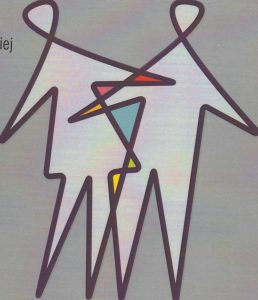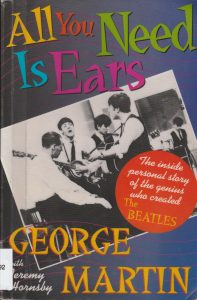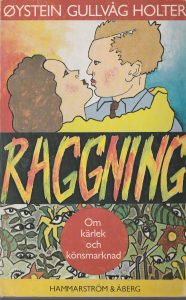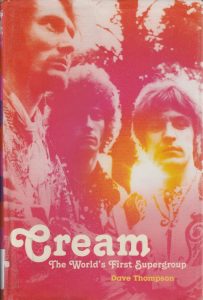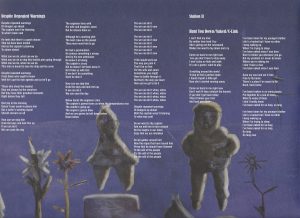
It looks a bit sad, maybe – the cover on Harriet Holter’s doctoral thesis, published by the University press (Universitetsforlaget), Oslo, 1970. The cover was made by me and Iben Hjort. No brains involved. Empty at the top.
What did Harriet Holter actually say, regarding gender differentiation and stratification? Her text was a world first – or a very early candidate, to distinguish more clearly between these dimensions. Here are some excerpts.
‘The concept of sex differentiation is in the present work often distinguished from sex stratification, that is, from the ordering of the two genders in terms of power and social prestige.’ p 18.
‘In the language of exchange theory, the net results of the differentiation accorded each partner must be great enough to keep motivating the exchange.’ 21
Some stratification counters differentiation:
‘Gender stratification [means] that men, in general, have more power and higher prestige than women. In what sense is this a reasonable postulate? Everyone is classified by many criteria in addition to sex. Sex is only one of several attributes that affect a person’s total prestige. It is assumed, then, that men tend to be evaluated more highly (..) when all other status criteria are similar for the two.’ p 44.
‘A functional explanation of the common rank order between men and women would have to postulate that women’s tasks, that is, to give birth to children and take care of them and rear them, is less necessary for society. (..) This position seems untenable. Gender differentiation, not gender stratification, may promote basic societal requisites like protection of the young and securing a close contact between infants and nourishing mothers. (..) Once men and women are differentiated with respect to responsibilities for infants, the two sexes differ in their opportunities for securing wealth and power.’ p 45
‘Women’s ties to their infants create immobility that is incompatible with many kinds of instrumental activities. (..) Instrumental activities are valued more highly than expressive ones especially in modern society.’ p 46
‘Expressive tasks devalued since they are less easily evaluated, dont give control over large resources (like some instrumental tasks).’ p 47. ‘Unlike expressive roles, instrumental ones require the delay of gratification, which helps in the control of resources’ 47
‘The more differentiated in the traditional manner are the tasks of men and women, the more likely it is that the stratification is marked. (..) [Yet] Certain forces act counter to these processes’. 47-48
‘The complementary natures of sex roles … is also a basis for the development of female forms of power as well as male ones.’ 49
‘The main hypothesis [in research] about improvements in the exchange positions of women follows from their increased occupational participation.’ 50 ‘Women do not have to use sexual favours as goods-in-exchange, a fact that enables them to enjoy sexuality as a pleasure in itself. And it might be added, women’s freedom with respect to choice of marital partner is increased.’ p 50.
Harriet Holter compared sex and race as examples of ‘ascriptive differentiation. Due to the conventions at her time, she here uses the term differentiation, rather than stratification, and states (p 51), that “One characteristic of sex differentiation, and partly of race differentiation (..) has been the change in the definitions of criteria from legal rules to informal norms. Such a shift seems to have taken place in all societies that have experienced prosperity in recent times.” She concludes that “sex differentiation, like other functional differentiations, entails a rank ordering of the positions of men and women.” (p 53).
In chapter two, on sex differentiating norms, she defines “sex roles or gender roles” (p 54) more precisely – this is “stable, patterned and sanction-carrying expectations about a person’s behaviour”, “the sum of norms directed towards a person occupying a certain position.”
Later, she discusses why gender is not class – a different type of ranking mechnanism, p 225. She notes that women are sometimes more conservative than men, ‘more in favour of ascriptive principles than men’ 230. ‘Sex differentiation may support class stratification by reducing tensions produced by the stratification’ 231.
Here we are into the heart of the matter. Renewed and increased class stratification may be eased by going back to a more traditional gender role system.

Each year, since 2012, the Schengen Peace Foundation and the World Peace Forum award the Luxembourg Peace Prize, an award that “honors the outstanding in the field of peace”. The categories of the Luxembourg Peace Prize and their celebration “amplify the aims and goals of the World Peace Forum”. This year, the award for “outstanding peace organization” was given to Promundo.
The prize for “outstanding peace activist” was given to Masami Saionji and Hiroo Saionji of the Goi Peace Foundation and May Peace Prevail On Earth International, based in Japan. Thich Nhat Hanh received the award for “outstanding inner peace”.
Since its founding in Brazil in 1997, Promundo has worked in collaboration with partners to advance gender equality and prevent violence in over 40 countries around the world through research and evaluation, targeted advocacy efforts, and evidence-based educational and community-wide program implementation.
The research model and its links to implementation and innovation are a main part of the reason why Promundo received the prize. The prize statement specifically mentions “high-impact research”. Cf https://luxembourgpeaceprize.org/laureates/outstanding-peace-organization/2019-promundo/
The new research is also used in the recent State of the world’s fathers report (cf https://genderjustice.org.za/publication/state-of-the-worlds-fathers-2019-executive-summary/), which has drawn attention from media including The New York Times (https://www.nytimes.com/2019/06/07/us/parents-fathers-role.html )
An important part of this research model was developed in Norway. Here is the background. And some ideas, how to follow up. 7 points, in all.
 (detail of cover of Brandth and Kvande, editors: Fedrekvoten [The father quota], 2013)
(detail of cover of Brandth and Kvande, editors: Fedrekvoten [The father quota], 2013)
1
A main part of the Promundo research effort started from a new type of gender equality survey made in Norway in 2007 in a project and survey called “Gender equality and quality of life”. The survey included much more detail on gender equality than previous studies, including more perspective on men as well as women, more focus on gender equality not just in opinions but also practices, household care and work divisions, and well-being, health, conflict and violence.
2
The Promundo team developed the Norway survey framework into a more relevant and applied version applicable in the global south, focusing on violence and health issues, and expanding the practical experience questions. In the first 6-country survey (2009-11), about 60 percent of the questions were taken from the Norwegian survey. The Promundo survey was called IMAGES – International Men and Gender Equality Survey. Later, as Promundo and local partners have adapted the survey in new contexts, now more than 40 countries, many of those core questions have continued to be used. And the logic of gender equality being related to quality of life continues to be a key conceptual framework for the studies.
3
The survey design was further developed by the Promundo team in a variety of contexts and collaborations, including cooperation with researchers at the Centre for gender research, University of Oslo. In some respects, it goes far beyond the original Norwegian project, although main questions and an important part of the framework remained the same.
4
The Promundo development mainly concerned actions – more than structures. The original Norwegian model had more emphasis on mapping structural factors hindering or helping gender equality. Later, an independent development of the structural part of the design was made in a Poland-Norway study (2015). Several books and papers have been published from this project (called GEQ – Gender equality and quality of life).
The Poland-Norway study includes a “European blueprint” for a wider European project, combining a developed survey questionnaire with interviews and other data. See http://www.geq.socjologia.uj.edu.pl/en_GB/start?p_p_id=56_INSTANCE_ZGJFS82ydNo6&p_p_lifecycle=0&p_p_state=normal&p_p_mode=view&p_p_col_id=column-2&p_p_col_count=3&groupId=32447484&articleId=136474060 – The Promundo survey developments gradually also included structural factors.
5
However, a comparison of these partly independent developments of the same research model remains to be made. The original gender equality model focused on a number of broad factors to be investigated regarding the “state of gender in/equality” – how to measure this as an independent dimension, in society. These included gender equality in childhood and youth, in working life, public sphere, family and household, etc. The presumed factors were designated mainly as “structural” but included cultural variables also. The design had a social-psychological dimension.
6
Why has the research model been a success? It goes into a not so well known area, men and gender equality, combining action questions with structure questions and cultural questions. It is focused on important issues like health, caring, conflict and violence. It s not a “cover all” but offers a more detailed map than other research designs. Weak spots can be reduced by combining surveys with other methods.
A main reason for the success, in my view, is the combination of action and structure aspects. This means that trends and actions among men (and women) can be analyzed with more nuance and precision, regarding structural factors. You get more information on specific themes like violence, especially in the IMAGES version, and also tools to adjust for different social and cultural context, including five main dimensions of gender equality and (in less detail) other discrimination experiences. This makes for a powerful tool. It is a bit like a “meme”. Once you have this new mapping, you don’t want to be without it. In principle, investigation can be focused and targeted, and remain balanced, un-prejudiced.
7
Analyzing the total evidence, both the new European studies and the new global studies, is a main issue now. It needs to be done. Through our center at the University of Oslo, I have cooperated with Promundo in order to get this issue into the prioritized European research agenda. So far, without funding. I hope this will change, now.
There is no doubt whatsoever that this research effort on gender, men, women, violence and conflict, health and well-being – is of great importance not just in itself, but also in relation to other top priority research areas. How to reduce social discrimination. How to resolve burning questions of climate change. How to engage men and boys as well as girls and women in positive gender equality change.
Now more than ever, with so much interest in the topic of engaging boys and men by donors, governments and academics, the IMAGES dataset, together with the European dataset, is an unprecedented resource for analyzing these issues, and considering how to bring other topics into new surveys, and begin to carry out the survey again in the same countries 10 or 15 years later to assess change. Furthermore, given that Gates Foundation supported Promundo to unify and clean up the global dataset, Promundo and the University of Oslo are well-placed to carry out this analysis – building theory, identifying gaps and opportunities, and making IMAGES and European tools, questionnaires and interview guides even more available to interested researchers.

I have been reading Chris Beckett’s science fiction novel America city – a direct extrapolation from today’s events in the US. A hundred years from now, the south of the US is no longer liveable. Immigrants flow to the north. But to win the election, presidential candidate Slaymaker has to relieve the burden on the northern US states. His outspoken female (and partly feminist) advisor comes up with an advice: what about Canada, they have room for our refugees. With scary but quite probable results.

This book, together with the great conclusion of the Dark Eden trilogy, Daughter of Eden, makes Beckett my favorite current sci-fi author. There, he goes into the mind of a “ghostspeaker”, the kind of woman prophet-sayer that is otherwise not much credited in science fiction. In America City, it is the mind of a US president wanting to build walls. Beckett looks from the inside. He goes into the mindset of the “others”.
Top of today’s literature, if you ask me.
After reading America City, it was somewhat of a shock to discover this record – Ainais Mitchell: Hadestown – Why we build the wall. I had not known this before.
I read, it is now a Broadway musical – I would love to see it.
To soothe my mind, I play a record dedicated to another vision of America – one of openness and acceptance:

How come boys and young men wanted to grow their hair long, going against the dominant social norms in the 1960s and 70s?
They were seen as girls, devalued and unmanly. Yet long hair became a way to demonstrate a youth revolt and a counter culture.
I am reading a lot of books, including music histories, for a book project on men and masculinities, in order to understand this change.
“All you need is ears”, Beatles producer George Martin argues, regarding the success of the Beatles – the leading long-haired band.
This is a good book regarding sound – a focused yet limited regarding the artistic contribution of the Beatles (and their sound as part of their artistic intention). Martin writes a lot about the technical issues and troubles with analog recording, with too few tracks and too much noise, and the text (written in the late 1970s) is more technical than emotional.
Yet this is the text of a record producer, not an artist, and should be judged on its own merits.
Much of what he says about analog recording, written before the advent of digital recording, which emerged some years later than this text (in the early 1980ies, with CDs supposed to represent “perfect sound forever”) is still relevant and interesting today. His book gives valuable knowledge, for example, on how to set up microphones, how to adjust for different instruments, and how to get the full sound of a band.
George Martin the producer and sometime-co-musician with the Beatles was never fully credited for his work. This is made very evident in the last part of the book. His complaints are reasonable, but his nagging tone, bringing up the theme, also reminds me of other recent music books I have read, in the direction, “I should have been paid x times more”. Artists and contributors often start out from artistic and idealistic reasons, but often end up – even if they sell well (or, especially in that case) – in conflicts regarding revenues, profits and egos. With maybe the ego part the hardest territory to negotiate. Alltogether, the in-depth books I read, including biographies of rock bands, artists and producers, describe a complaint against music capitalism. You can make a hit, but from then on, you are on the run.


20 000 pupils – or more – have protested in Norway, against the lack of climate awareness on the behalf of the politicians. The protest is spreading all over the world.
Not strange – the youth are the ones who will face the costs of the actions – or inactions – we do now.
The movement, now, is much focused on the young against the old. A well known division, “age”, comes into sociological play. “Hope I die before I get old”, like the Who put it, back in the radical 1960ies. Even in gender-equal – supposedly – Norway – we get voices like way back then. “Why don’t these youths go back to school”. Demonstrating for the environment is not a legal ground for being absent, in most of the schools.
Norway seems to react like a dinosaur slightly before the catastrophy hits. It is sad to see.
Yet this is the very fare that provides the food for a new opposition, a new youth rebellion, going beyond the one in the 1960s. Now, like then, the adult world and the establishment create barriers, obstacles, and try to brush off the new insight. Later they will try to co-opt it, make it into the system in “harmless” ways – to judge from historical experience of the last youth revolt. Now it is maybe happening again. Yet these errors can be avoided. The situation is different, there is more focus, and the pupil revolt is supported by scientific evidence. The 68-ers said the whole system was bad. Now, the approach is more limited – the system is bad, if it does not correct the environment crisis.
There are plus and minuses to the “critical” approach back then – and the environmental approach now. The usual end of the story – youthful rebellions through the times – is that the youth revolt does not hold out. It has maybe some victories but mainly cultural, society is not much changed, and may even go back to worse practices due to the “humiliation” of the childish critique of the youth and its counter culture.
However, now the clock is ticking, and the expertise is on the side 0f the youth – so who knows?

I am writing a book on young men breaking the gender barrier, “looking like girls”, growing their hair long in the 60ies and 70ies. Since I have other tasks it moves ahead a bit slowly. However, I read source material, especially, music biographies and books.
Recently I’ve read Townshend, Pete 2012: Who I Am, and Cushman, Marc: Long distance voyagers – the history of the Moody Blues (vol 1 1965-1979). Both contain interesting glimpses of the aversion against young men with long hair, and the way the hair was – so to speak – entangled with the new youth culture and progressive music.
As a music sociologist, I think they err on each side of the road. The two books have two different kinds of limitations.
Townshend lays out claims that he was the first doing power chords, and came up with other inventions, but he tells surprisingly little of the musical development in the band and how this impacted on the band relationships. It is more like, this band mate was strong / not so strong.
Cushman’s first part – a massive volume on the Moody Blues, will there be a second? – on the other hand, goes all into the music. The social context is more sparse. And the text uses a lot of space for listings of the band’s record sales, rather than the music itself. Nevertheless, it is clearly the new standard of scholarship on this band. Yet even here, I would have liked better analyses of what exactly the Moody Blues did, that was musically new.
Plus points in Cushman’s book include glimpses of Ray Thomas as alto flute player (and other musicians in the band) combined with the production talents of “the sixth moody” Tony Clarke. The credit to Clarke is well deserved. Decca was quickly learning and developing production technique developed at EMI (Abbey Road), and had very high standards from earlier recording also, surpassing EMI in some respects.

Cusham is great on how the Moodies – this unlikely bunch of old-style-singing long-haired guys with somewhat uncertain instrumental prowess – were allowed into the Decca “holiest of holy”, with the new Deram sound system (DSS), using two four-track recorders for better stereo. The band was supposed to play classical easy listening music. They barricaded themselves in Decca’s best studio, and ended up inventing something new, in the typical spirit of the day. The result was Days of future passed, one of the larger-selling LPs of all time.
Townshend mainly tells his own story, and somehow, I find the connections to the music rather weak. Fans of The Who may love the band for “inventing” this or “doing” that, but what actually happened, musically? Maybe this critique is unfair. Townshend does tell about his attempts to go further, to develop music beyond what the band had done so far. Later in the book he says that the band had done a lot of jumping and showing off, this would not do anymore.
Inadvertently he also tells a story of how “youth” wasn’t a staying ground for the attempted change.
I would have hoped Townshend took some self-critique for lines like “Hope I die before I get old” – but it is only implied. Like, maybe we DID smash up a few guitars too many. This is the tone of the book, as I read it. Townshend’s book has elements of defense that I won’t go into here. Maybe it spilled over, also into his judgement regarding things back then. Maybe a revised version could work this out better.
Bands like The Who took the “soft” message of the youth revolt and the counterculture, and “hardened” it. What happened, in that transition?
Cushman is fine on the music, but the wider social context, culture etc is often largely absent. How come these nice Birmingham lads, singing in almost 1950s style, were tuned on to the new youth rebellion and counter culture? I wasn’t much wiser, even after 700 pages.
Was the Moody Blues, on the road, a much more orderly affair, than The Who? Less misogynism and use of groupies? It seems so. The books show that male bands could have quite different wishes and setups. Although the different filtering of the story telling applied by the two authors may play a role.
Was the creative process of both bands hindered, by the music industry, the emphasis on commercial hits and best-selling albums? Again, it seems so. Despite variation the basic story is remarkably similar. Did this, all in all, create a more “masculine” idea of music? Now we are into speculation territorry – but it may seem so, yes. In various ways. Ending with the synth-pop of the 80s. Long-haired bands becoming dinosaurs, one way or the other. In fact, you maybe don’t need Reagan or Thatcher or digital sound problems into the equation, to predict the generally agreed-upon “bad sound of the 80s”. Just add “band pressure” working over time.
For example, listen to Moody Blues: Octave album, Steppin in a slide zone (1978). This sounds so bad, it maybe sounds great. If you like the 1980s sound. The flat synthetic sound reminding me of shoulder pads for men. Short hair once again. A kind of prophesy of the 1980s music letdown. Was Clarke out to lunch? Anyway, almost everyone agrees – with Octave, we are no longer into the “classic” period of the group. Artistic quality is falling. Why? Constant pressure from a commercial machine is – broadly – the best answer.
Octave was made after the group was totally exhausted, having made seven albums, later called “the classic seven”, in a period of nine years. Likewise, the Who and other groups were pushed beyond their limits, by very high demands from the record companies – entangled with their own wishes to make money, while the attention was there. “Do it now”, like Paul McCartney advises on Egypt station. Everyone remotely musical and socially engaged, 1965-75, felt like a storm was coming on, a counter culture expressed especially in music, a new truth that could not be denied, or at least, a new level of public discourse, an extension of democracy, “love” as in empathy, etc. So – the behaviors and conflicts of the bands – can be read in this larger perspetive, they were a new type of organizations, that tried to spearhead the youth revolution and the counter culture, but encountered great costs along the way.
Both books are well worth reading, if you are interested in this period, and its wider repercussions. They both give some guide into what to listen for – albums, songs – and a musical follow-up is interesting.
Best place to start with the Moody Blues is maybe To our children’s children’s children (1969), perhaps the most successful of their classic seven albums. Then try Questions, on A question of balance (1970). If this doesn’t rock you, nothing will.
:format(jpeg):mode_rgb():quality(40)/discogs-images/R-3571823-1378397821-2878.jpeg.jpg)
Best place to start with The Who – I have not decided yet. Listening to Tommy and Quadrophenia, The Who sells out, A quick one. The early stuff is often the most interesting. Maybe all in all the best intro, to get the feeling of the band, is The Who sells out.
:format(jpeg):mode_rgb():quality(90)/discogs-images/R-2229657-1338708241-6734.jpeg.jpg)

It feels strange, now, looking at a book I wrote many years ago.
The cover by Klaus Nordby is great – one of the best I have had, on the books I have published. You can see a key as well as a broken heart.
My own bookshelf copy is pictured here. It has been useful, opened many times.
What does the book say? Well – read it!
It is in Norwegian, and the title – translated – is “Dating, love and the gender market” (Sjekking, kjærlighet og kjønnsmarked). Pax, Oslo 1981.
The title starts with the Norwegian word “Sjekking” which is not so easy to translate (literal: checking, checking up). “Dating” is not quite precise, especially as it relates the practices in the US that were never common in Norway. Picking up a partner is maybe more realistic, on the whole, but the English words are not so clear.
There was a Swedish translation of the book (Hammarstrøm och Åberg, 1983) – using the word “Raggning” for the Norwegian “Sjekking”.
The cover (by Johan Petterson) shows another angle – a kiss above, a jungle below.
Note those eyes…
Sadly, the book was never published in English.

Cream once more
Reading Dave Thompson: Cream – the world’s first supergroup. Virgin books, London, 2005
I put on some relevant vinyl albums, to test his hypotheses.
The band sounding very good indeed on live concerts, Thompson claims. I put on Live Cream, volume 2 (RSO 2394 155) – yes this is true. On some tracks they sound better live, than on their studio albums. Do they need an organ (which they worried about) – no. I note that bassist Jack Bruce takes over much of the stage, and yet this is contested by the two others – as interpreted by Thompson.
In some long instrumental tracks, Clapton mainly plays with Ginger Baker (on drums) while Jack Bruce (bass, vocal) shuts up. Baker heightens Clapton’s playing beautfifully, increasing energy and light and darkness where needed.
I listened to the “Beano” album (1966), and then John Mayall’s solo album (1967).
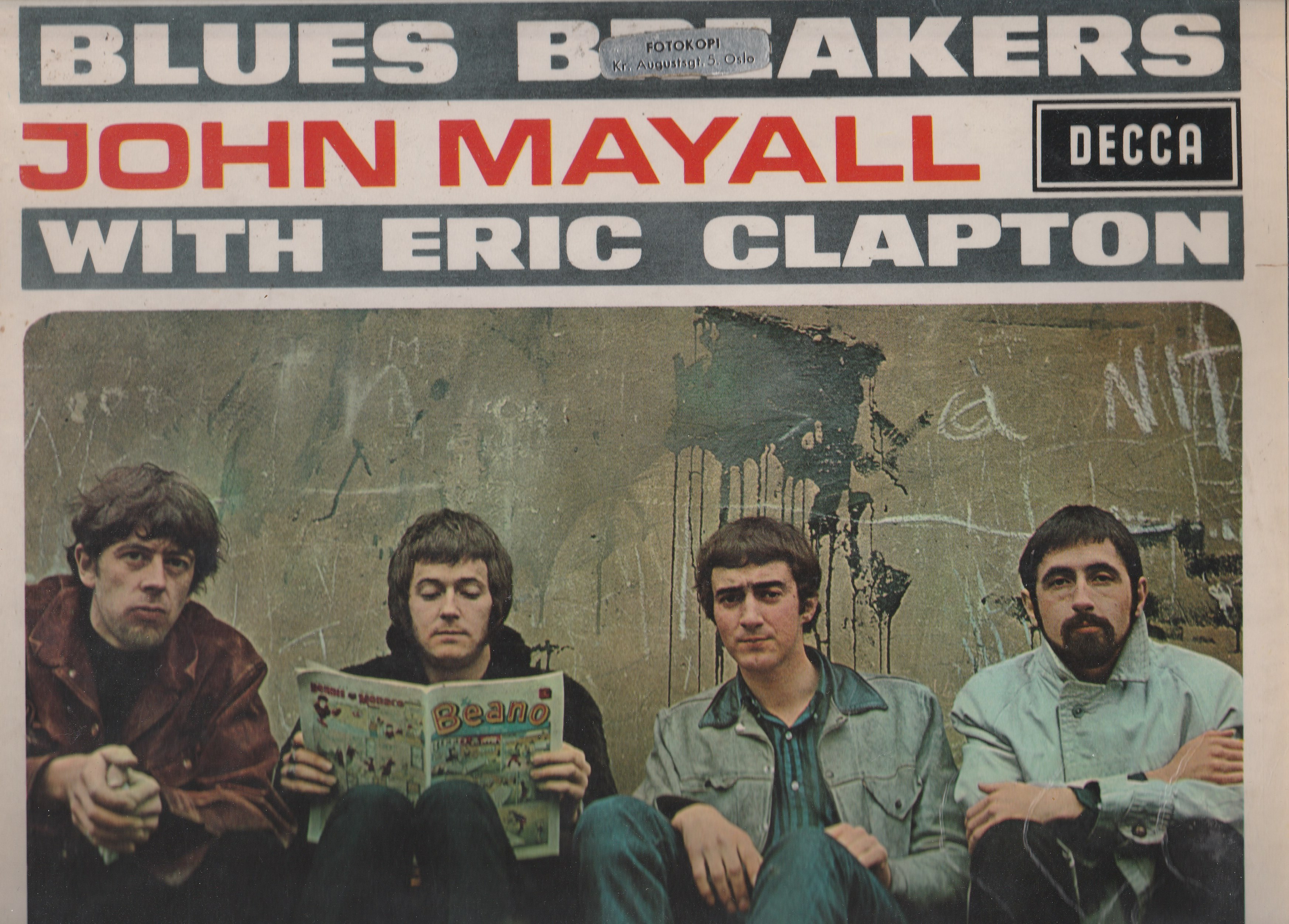
Again, Thompson’s interpretations are in line with mine. Thompson’s first 70 pages are focused on the UK blues scene before the arrival of Cream. This is very useful, and spot on, as far as I can tell.
Example: I first heard the Beano album way back when, with my cousins, in ca 1969, on a small Phillips Bambino record player. Even with this tiny player, we were mesmerized by the tone of Clapton’s guitar, from opening track “All your love” onwards.Thompson details how Clapton had to struggle, to get this “overdone” guitartone accepted, in the recording.
Cream was created as very fragile compromise (the group only lasted two and a half years) going beyond the music up to that date (1965-66). It was like opening a time window.
When the group got lyrical assistance from Pete Brown, they started the venture. They strutted their musical stuff on the debut album Fresh Cream (1966), but their main progressive thrust forward was the next Disraeli Gears album (1967), followed up by the halfway succesful double album Wheels of fire (1968) and the so-so Goodbye album (1969).
Thompson does not note that some of Mayall’s songs were pro-feminist. Or at least, proto-feminist, compared to the standards of the day.
On the Mayall and Clapton “Beano” album, his song “Little girl” is about a woman who has lived 18 years in bad relations. Mayall is out to rescue her. Is it “pastiche” or just riding with the options of the day? Maybe somewhat, but on the Blues alone album, a bit later, he is more explicit, on this front – especially in the “Broken wings” song, maybe the best on the album.
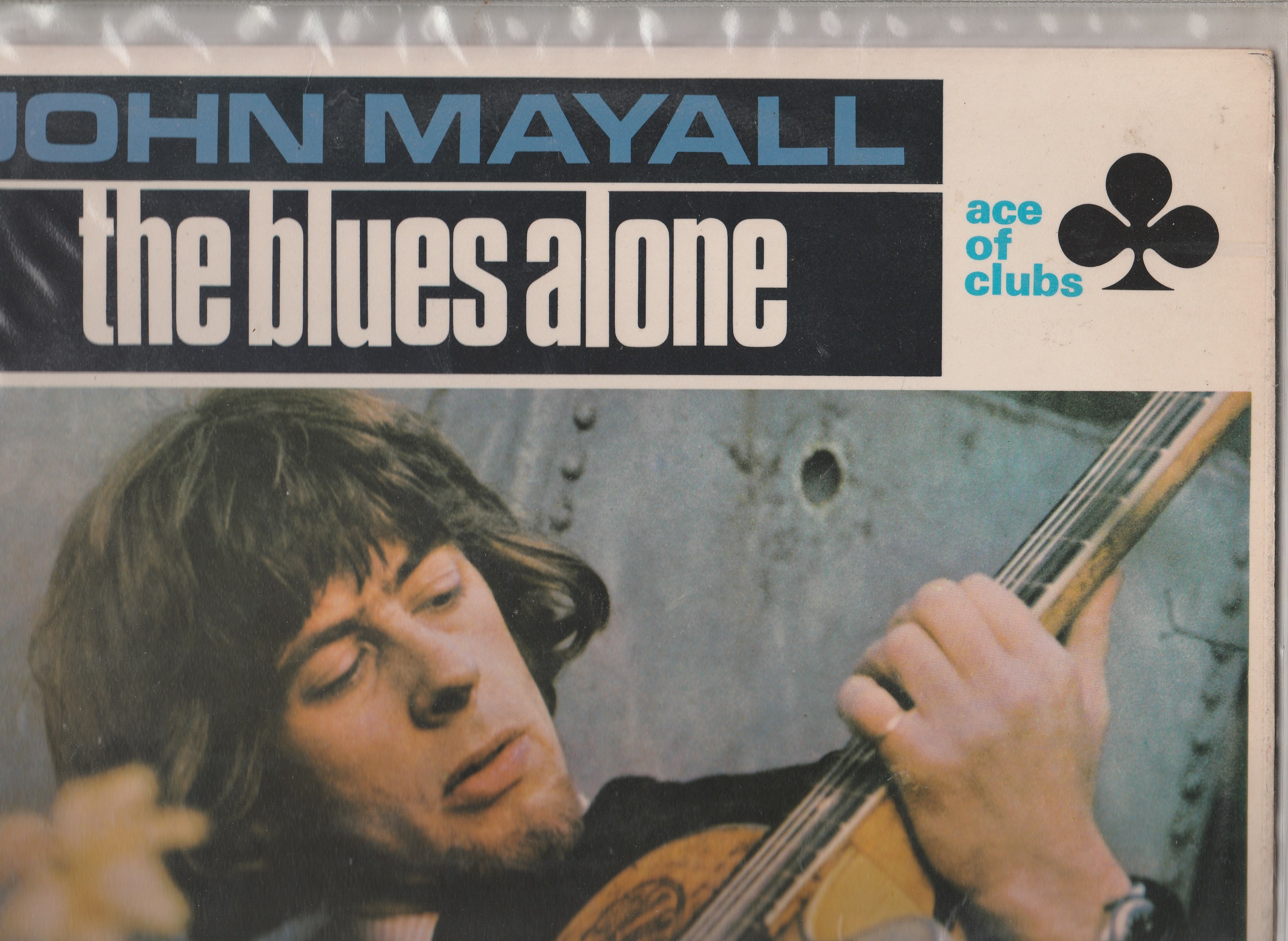
“Somebody broke your wings”, he sings, telling the story of a woman. Mayall does not try to intervene as savior. Instead the song is a beautiful attempt to do what Kate Bush (Hounds of Love, 1985) called for later – if I could be in your shoes, climbing up that hill – trying to be in the other person’s place. Shifting the gender perspective. Reminding me of Donovan – although the two started from different musical grounds (folk vs blues).
Another follow-up of the pre-Cream scenery detailed by Thompson was the band Colosseum, with Jon Hiseman on drums. I would not say he is better than Ginger Baker in Cream – rather, he is (at his best) in this same “creamy” class, like in their most well-known prog rock cut, “Those who are about to die”. Here, you can hear many jazz-rock attempts get to frutition, based on a good prog song concept, and – not least – the drummer Hiseman propelling the band forwards. The great horn-blower Dick Heckstall-Smith and the others get air under their wings.
This is a song about – basically – freedom from slavery. Other songs were about freedom from other forms of oppression. Including gender oppression. This was the spirit of the time.
This social awareness – in my opinion – was what pushed the music forwards – opening the “time window”.

Paul McCartney’s Egypt station lights up like nova and will become a classic record.
Yes some songs (like Fuh you) are silly and in the “old man gets it up” category. But they are made with a joke. They are parts of a serious album of surprising strength. Made in senior days, reminding me of Dylan’s Time out of mind, showing what a great artist Paul McCartney is, beyond any form of classification; inventive and communicative. Even in his vaudeville and sing-along songs on the album, there is a coherence and sense that it fills a whole. “If you come on to me I will come on to you”. There is an old man trying to get it all on record, before he dies.
The nadir is Despite repeated warnings, a small symphony, and the best potential single is Dominoes. It all works up to a coherent unity. Listening to the album, I found it did not leave me, it would not let go. Over time, different songs on the album came into my mind. A grower, like they say.

Screen capture showing Commence with my calendar, contacts and research references windows open
“Commence” (or “Commence RM”) is a program in the somewhat quaint category called PIM – a personal information manager. Now, why would I need a personal information manager? It was big news almost thirty years ago, running the newly developed Windows operation system, at that time called “Current”, developed by IBM engineers. But today?
My method was to use the program in my own way. I liked the “personal” element, even if Commence mainly was developed in a commercial direction, as help for sales management. I used it as a researcher. I built my own research literature reference database in Commence long before Endnote came along.
I bought the first version of Current (https://en.wikipedia.org/wiki/IBM_Current), not least due to an enthusiastic review (I think it was in PC Magazine) – this is not only personal, it enhances the power of the user, in line with “the PC revolution” – a term still very optimistically used at that time. But I have not regretted, since.
After some quarrels (“why do you need this when we have Outlook”, etc) I’ve usually been able to get my employer to pay the cost of upgrading. I have succeeded in convincing my managers that this is an advanced tool that I need in my work. Why? I have a lot of extra information along. Not just the capability of e g Outlook to connect meetings and times. The PIM category was created from the ground up to support four main categories of information – time, meeting, note, to do. Current / Commence does this from the start, it is built around this core. So it is possible to use “as is”, and it can be tuned and developed, for further benefit.
So what is the plus, and the minus? Minus first: expect a learning curve. Yes, you can set up your own databases, and get them connected to the calendar function of the program, or other data bases, when needed. But it takes some time to learn how to do this, and some of the user interface, for example for setting up “Agents”, programmable functions in the program, is not very good. The big plus is that it works. Once you have set up something successfully, it seldom breaks down due to bugs. The program is very stable. It is also remarkably fast. Searching through the data is very quick (and you can do a search through all your data bases).
Some concepts must be learned – Commence lets you set up a database under the term “Category”, and each category has “items”. So my literary database has books and papers as items. You can connect categories to each other. My “Music Works” category has connections to my “Artist” category.
When you learn the basics of it, and have set up a few of your own databases – you will discover that Commence is extremely flexible, in the ways you can work with it. For example, I have 3000 items in my book base, 1500 in my music database, and 500 in my product base. Database items can be imported into Commence, or created there.
How can I get the information from each of these bases / items? Not just by opening the program and having a look, from a quite good user interface. But also from other programs. I can use an old but still functional mechanism in Windows called DDE (dynamic data exchange).
So from a Word macro, for example, I can ask for an item, or list of items, from the Commence database. You can also use the Commence API, and program it, from some other type of code, in Visual Basic, for example. If you know how to use Commence, and the basics of a programming language like Visual Basic, it is not very difficult to extract or input information in Commence. Commence also has “scripting” options, so that you can get some data base behaviour for free – fill in this field, and that field will also be filled in, and similar. And as mentioned, you can have Agents that are called from other programs (or from within Commence) to perform batch operations – a series of commands.
So for flexibility, the program scores top – just like it did at the start. It is a kind of “Lego”. You get a lot of building blocks.
Even if it requires some effort to learn and to adjust for personal needs, the program has given me real improvements reducing time for “look-up” type of work. It is like having some extra pockets, for information.




